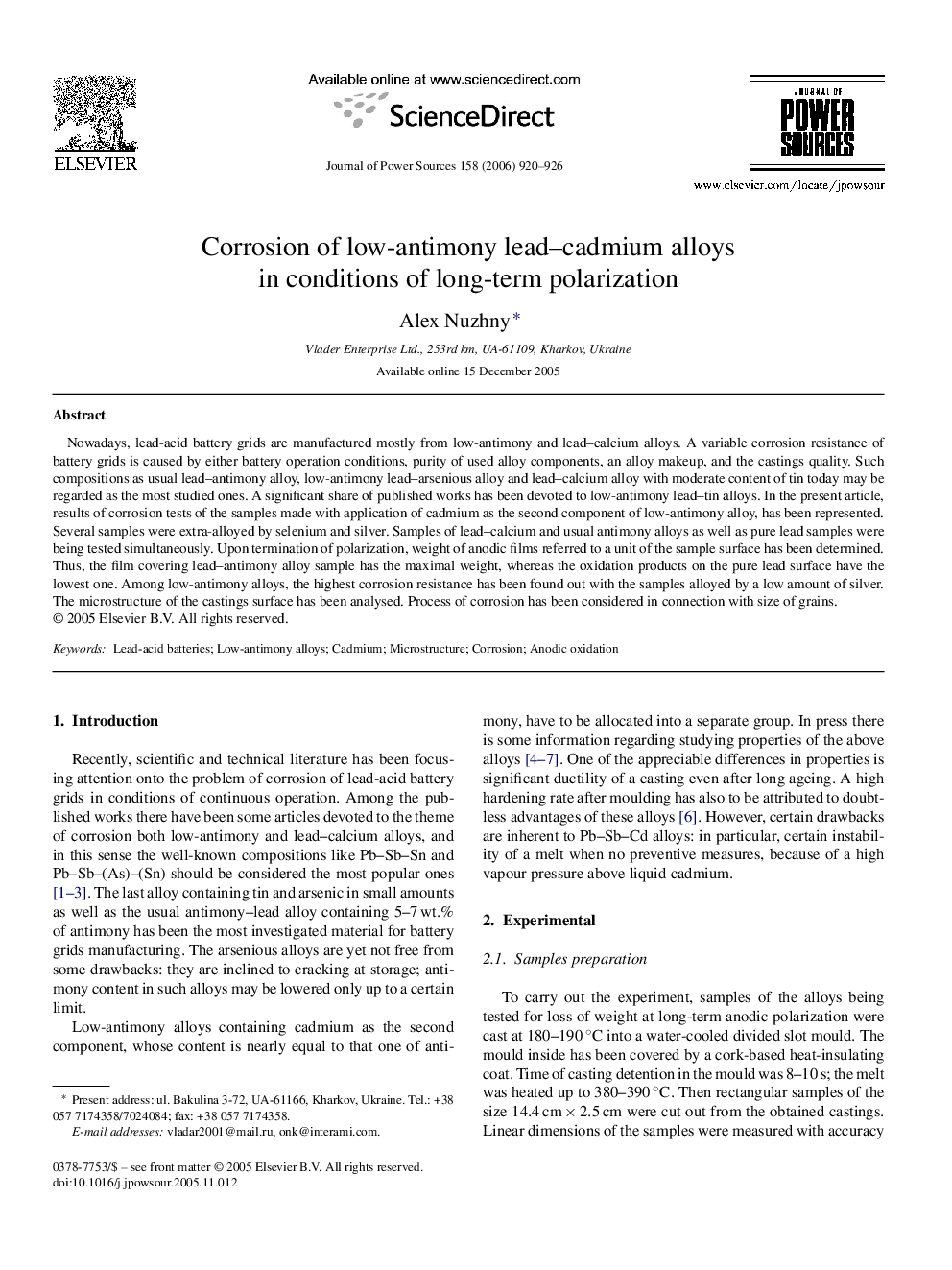| Article ID | Journal | Published Year | Pages | File Type |
|---|---|---|---|---|
| 1287351 | Journal of Power Sources | 2006 | 7 Pages |
Nowadays, lead-acid battery grids are manufactured mostly from low-antimony and lead–calcium alloys. A variable corrosion resistance of battery grids is caused by either battery operation conditions, purity of used alloy components, an alloy makeup, and the castings quality. Such compositions as usual lead–antimony alloy, low-antimony lead–arsenious alloy and lead–calcium alloy with moderate content of tin today may be regarded as the most studied ones. A significant share of published works has been devoted to low-antimony lead–tin alloys. In the present article, results of corrosion tests of the samples made with application of cadmium as the second component of low-antimony alloy, has been represented. Several samples were extra-alloyed by selenium and silver. Samples of lead–calcium and usual antimony alloys as well as pure lead samples were being tested simultaneously. Upon termination of polarization, weight of anodic films referred to a unit of the sample surface has been determined. Thus, the film covering lead–antimony alloy sample has the maximal weight, whereas the oxidation products on the pure lead surface have the lowest one. Among low-antimony alloys, the highest corrosion resistance has been found out with the samples alloyed by a low amount of silver. The microstructure of the castings surface has been analysed. Process of corrosion has been considered in connection with size of grains.
